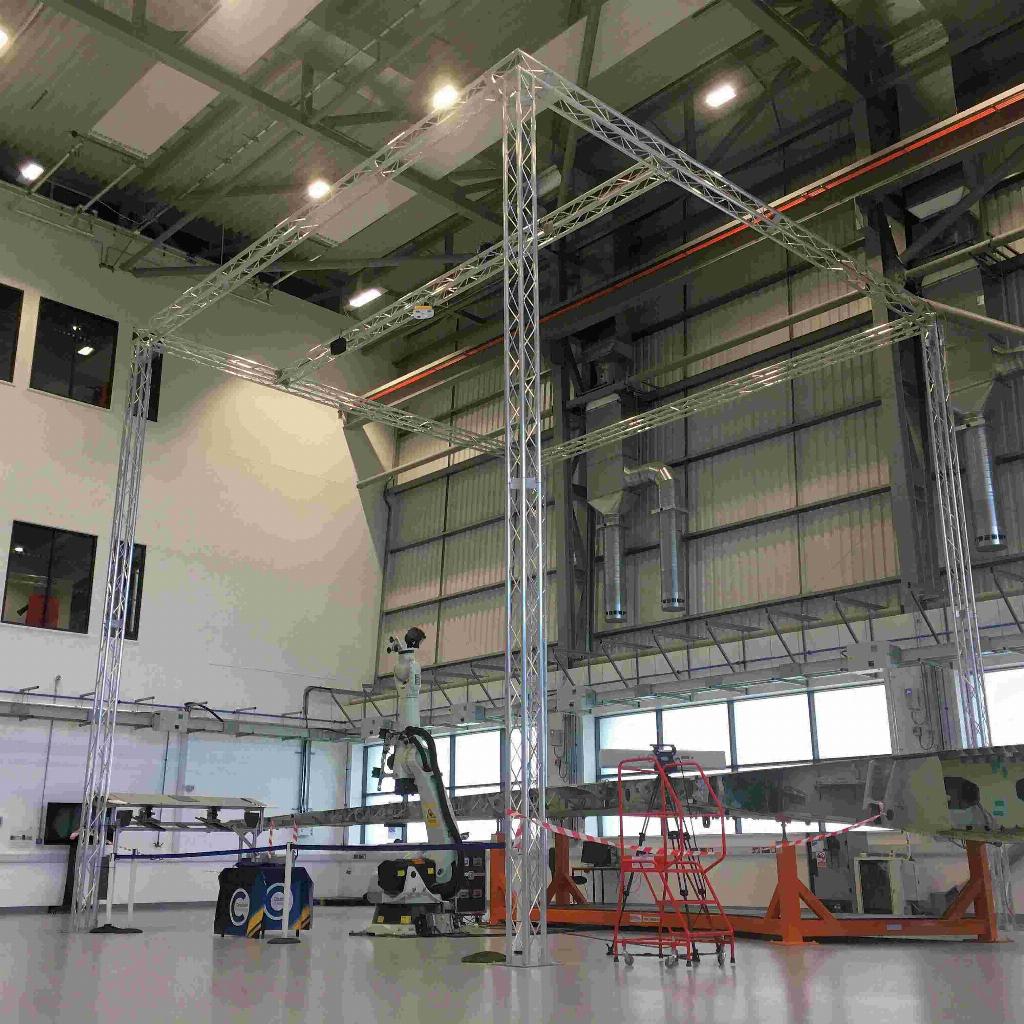On the wings of automated freedom

Professor Phil Webb, the Royal Academy of Engineering Airbus Chair in Aero-Structure Design, Aerospace Integration Research Centre, Cranfield University looks at the challenges involved in human-robot collaborative manufacturing, the kinds of robots involved and how they work, and the future implications for the industry.
Robots have long been part of assembly lines - but always in their own space, caged for safety, too dangerous to be working directly alongside human employees. When we walk onto a factory floor we expect to see “Don’t Cross This Line” warnings, light curtains, pressure mats and barriers. If we see any kind of hazard we put a guard up. It’s become unnerving to see any moving machinery working alongside human operators, let alone large-scale, powerful industrial robots.
Introducing automation has meant both an investment in the robot technology as well as a re-modelling of the entire factory environment, in a different physical infrastructure and work systems to ensure health and safety: a level of costs that has barred smaller manufacturers from taking advantage of robotics. The use of low payload collaborative robots (5-10kg) for light assembly processes has become widespread. But the true value of collaborative robotics is going to come from the use of larger, far less force and torque limited robots - in other words, the heavy lifting and positioning.
It’s a legacy and set of psychological barriers that now needs to be overcome if the sector is to move forward and benefit from the efficiencies and cost-savings achievable from the use of collaborative robotics. We need to be able to break the long-standing rules, remove the existing ‘cage-based’ safety approach and look at more flexible ways of assessing, detecting, managing and preventing risk.
Factory of the future

Airbus has a track record of innovation in robotics. The ‘Factory of the Future’ programme has looked at the use of collaborative robots for handling waterproofing testing on fuselages, doors and windows; lightweight robots have also been trialled for use in building A350 aircraft, installing brackets inside the fuselage. Now, as a partner to Cranfield University’s Aerospace Integration Research Centre (AIRC), Airbus has been working with the University to move to the next level in terms of assembling large components.
The size and facilities at the AIRC - a 10m by 10m robotics space - allows for full-scale development of production models. In this case it has meant working with an actual A320 wing and the assembly and fitting of moveable flaps and ailerons. It’s a process which traditionally requires lengthy assembly methods involving many complex tasks, high levels of dexterity and judgement from human operators. There’s a complete lack of standard parts. Assembly tolerances are sub-millimetre and there is the potential for cumulative inaccuracies. All of these factors make the application of conventional automation almost impossible. Large civil aircraft are predominantly designed for performance and structural integrity, founded on high levels of human testing of stress, aerodynamics and other performance issues.
The lab demonstrator has been designed to make use of the best use of human-robot collaboration: for a 200kg payload robot to lift, move and position parts accurately while highly skilled human operators perform the installation and fixing. Until relatively recently legislation would not allow this type of collaboration as the necessary separation distances and safeguarding methods would complicate and limit the use of the approach. Standard separation distances are there to avoid any circumventing of the 2D safeguards, and also because current safety control strategies only involve detecting human presence: so, distances have to be based on worst-case assumptions for relative position and velocity of operator and robot and robot stopping performance.
Airbus and Cranfield have devised a safety strategy that allows for closer integration of the robot and the operator, allowing for manual fixing of components while the robot drives are still active. A system of cameras, sensors and projectors is used to detect and monitor movement by both robots and operators, replacing the fixed 2D detection zones with a 3D vision based on real-time scanning that interprets safe separation distances in a dynamic way. If an operator moves into an area where the robot is active it will stop - making the approach ISO compliant. Often, it’s necessary for skilled operators to work together on multiple processes at the same time, swarming over the wing from root to tip. It’s possible to adapt the system to different types of human activity, shrinking down the protective area when it’s safe and necessary, to free people to move closer to the robot. The whole work area is monitored so there is no scope for circumventing the system.

Lessons from the demonstrator have included the importance of a sensory capability so that each part can be modelled before assembly begins. This allows ‘best fit’ algorithms to calculate the optimal pick up and place positions - and also removes the requirement for accurate jigs and fixtures which can make up a large portion of total manufacturing costs.
Collaborate to innovate
For Airbus this means its skilled teams can focus on what they’re good at rather than tasks of manoeuvring heavy objects in confined spaces. There is also less chance of parts becoming damaged by constant manual handling. In an industry dealing with skills shortages, this kind of collaborative robotics is becoming essential.
The technology developed in Cranfield’s AIRC lab since 2014 is now at a stage where it’s ready for trials in a real factory setting. Perhaps critically, the hardware system hasn’t been the only focus for the research. Given the cultural issues over human-robot collaboration in a factory stripped of cages, research has also been carried out into risk assessment and acceptability and building trust and acceptability. Work has looked at optimising the layout of factory floors for collaboration and ways to make operators feel most comfortable. Airbus and Cranfield are currently working together to demonstrate the technology within the Broughton manufacturing facility on the way to industrialisation.
www.cranfield.ac.uk/centres/aerospace-integration-research-centre













